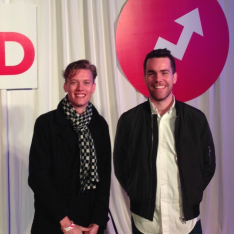It’s video, but not as we know it
 In this guest post Mindshare’s John Dawson and Jack Smyth look at how big digital players have changed their tune and are pitching to take a slice of TV’s ad spend.
In this guest post Mindshare’s John Dawson and Jack Smyth look at how big digital players have changed their tune and are pitching to take a slice of TV’s ad spend.
By now you’ll have seen the headlines from day one of the 2016 NewFronts in New York. The story, in many ways, was not surprising: it’s all about video.
What made us pause – and should make you, too – is not the ‘what’ of video but the ‘how.’
Here are the four things from the presentations that you should know. When these digital publishers talk video, they sound like a TV network.


Great write up. Thanks guys.
Hulu’s announced some new stuff:
http://www.hulu.com/press/post.....rtnerships
No sign of them announcing plans for Hulu outside of the US though, they do own a local Australian domain name and several legally registered trademarks with IP Australia.
They insist they are working on obtaining streaming rights for other countries:
https://help.hulu.com/articles/171122
Still focused on the US business.